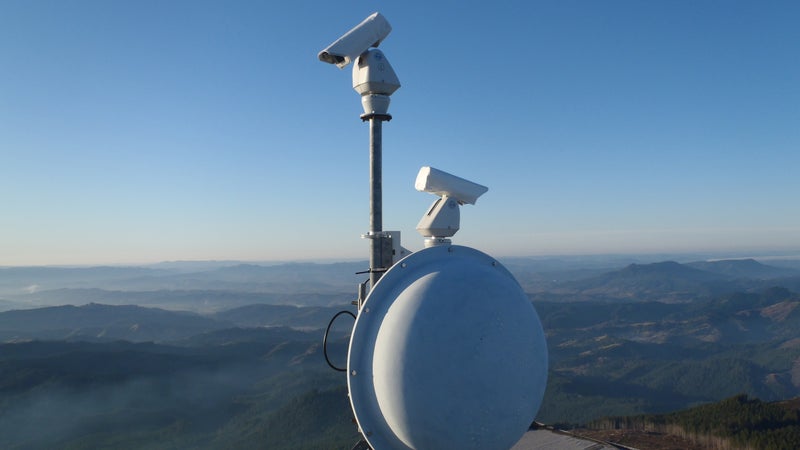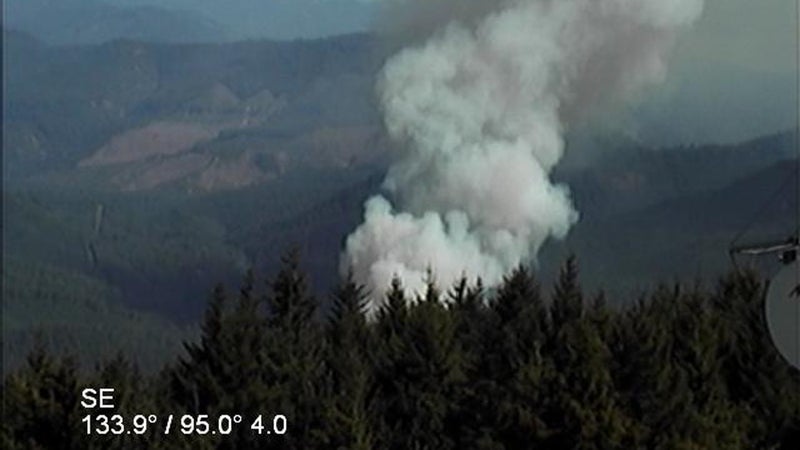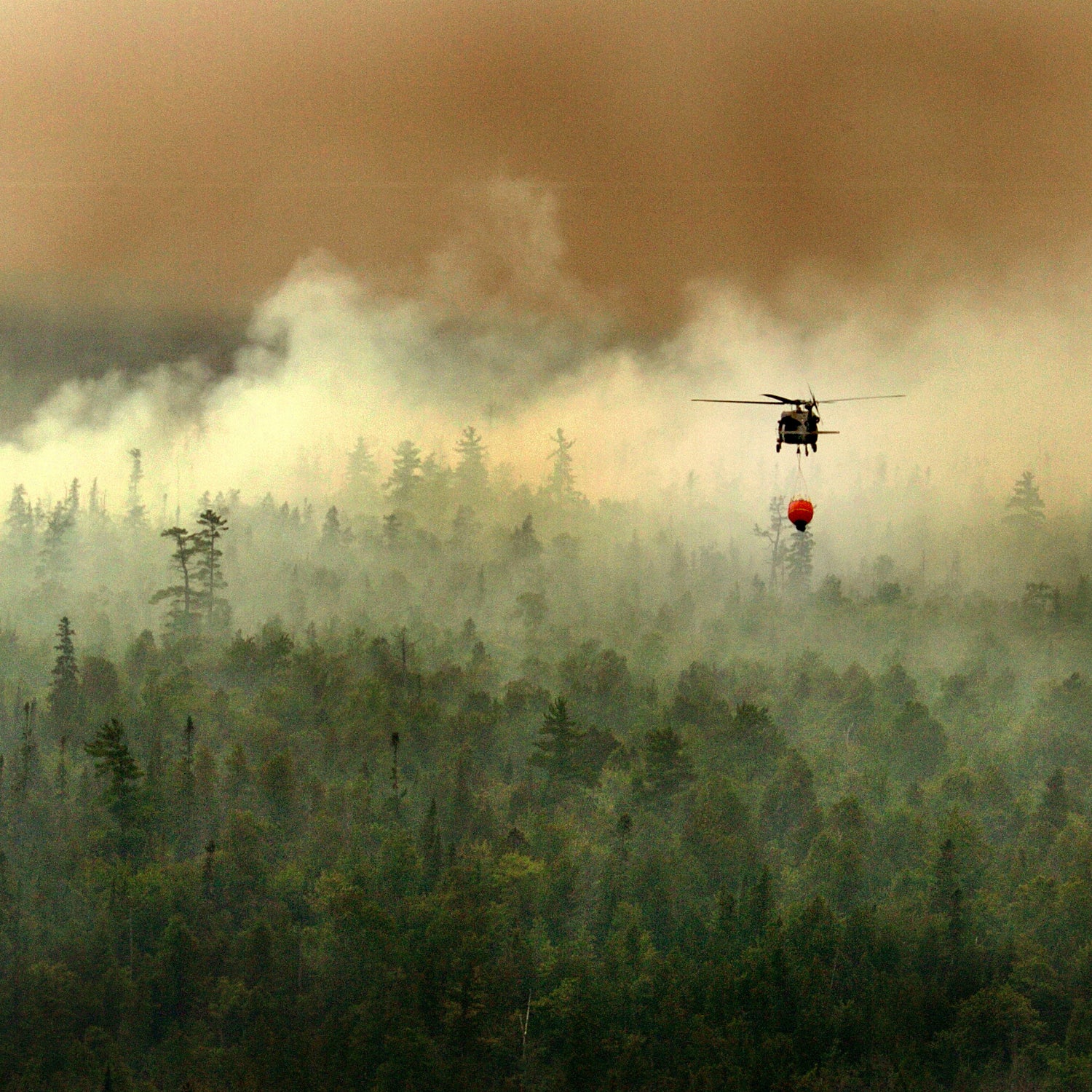I’ve just climbed 1,800 feet to the top of California’s Sierra Buttes, an iconic and rocky pinnacle in the heart of Tahoe National Forest. At the top of the hike, a rusty fire lookout hut towers over the peak.
The lookout, a 200-square-foot metal cabin reached by 176 teetering stairs and built in 1963, stands at 7,797 feet and offers dramatic views of Sardine Lakes and Mount Lassen in the distance. Fire crews have been using this point to spot wildfires for decades, but now, the place is deserted. Inside the boarded-up cabin sits an old fridge, an antique stove, and a bed frame that hasn’t been slept on for years.
Hundreds of fire lookout stations similar to this one exist across the West in states like California, Oregon, Washington, and Idaho. Of those, less than 35 percent remain staffed with people, according to the . Many stations had to cut staffing due to dwindling budgets.
But that doesn’t mean there are fewer eyes watching our local forests: now cameras are now taking the jobs humans once had. For the past two years, the at the University of Nevada Reno has been working with the U.S. Forest Service and other agencies to install high-tech cameras in old lookouts and mountaintop towers around California and surrounding states with the goal of detecting wildfire early.
Seven cameras have gone up around Tahoe in the past year, with at least four more on the way. The network cameras have pan, tilt, and zoom capabilities in all directions, can be accessed via smart phones from the field, can spot large fires up to 100 miles away, and have near-infrared night vision that helps crews spot fires in the dark.

The bonus side effect? Several cameras in the Tahoe area are located within ski resort boundaries, at resorts like Homewood, Heavenly, and Sierra-at-Tahoe, and will offer skiers and riders a more interactive live view of snow conditions starting this winter.
But of course, the cameras’ main goal is fire detection.
“We are trying to push the envelope for early detection so we can jump on fires early,” says Graham Kent, director of the Nevada Seismology Laboratory. “These cameras can help us get in front of fires and put them out.”
This summer, through a grant from the Bureau of Land Management, UNR’s lab implemented four cameras on peaks across northern Nevada that send a live feed of the landscape to dispatch centers. “Being able to detect fires early is a critical thing,” says Paul Petersen, the state fire management officer for BLM Nevada. “We’ve had a few instances already where we’ve detected fires much earlier with the cameras than we may otherwise have been able to. It allows us to have more eyes out in the field.”

Oregon started installing camera systems as early as 2007 and now nearly all of its manned lookouts have been replaced with cameras.
“What drove the exploration of new technology was our aging lookout towers. Many of them needed upgrades or needed to be completely replaced,” says Kyle Reed, the fire prevention specialist for Oregon’s , which monitors 28 fire cameras in their general area alone. “When looking into prices to build a new lookout, it was going to cost $300,000 and up for each lookout. Generally, the cameras cost a fraction of that to build.”
According to Kent, the new camera tower installments he works on can cost between $30,000 to $80,000. If they simply attach a camera to an old tower, the cost goes down to around $15,000.
Agencies may be saving money, but, some say, the cameras shouldn’t completely replace a trained human eye. “The problem with the cameras is that it takes a trained eye to spot the difference between a wildfire and a false alarm,” says Henry Isenberg, co-founder of the Forest Fire Lookout Association, who worked in a lookout station in Massachusetts for 20 years. “Cameras have their place, but they should be used in conjunction with a staffed person.”
Of course, staffed fire lookout positions still exist, but now one central dispatcher is able to watch cameras from multiple lookouts at the same time. “The reality is most of the people in lookout stations were laid off long ago,” adds Kent. “Without these cameras, wildfires are going to keep going up significantly due to climate change.”


